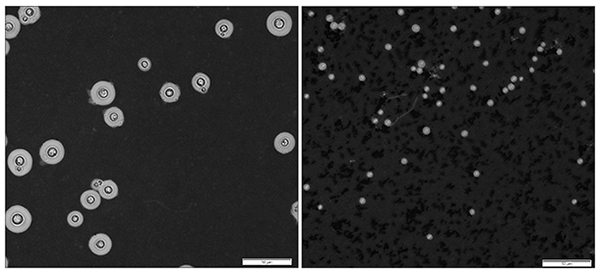
It doesn’t quite have the same abilities as Transformers (the popular sci-fi superheroes) to morph into cars, trucks, boats, and airplanes, but a harmful fungus undergoes a remarkable transformation once it enters the body.
Studies in mice show that as the fungal intruder travels to different organs, including the brain, it changes in size and acquires characteristics that help infection to spread, all in a matter of days. The discovery could lead to new strategies for blocking the infection and preventing fungal meningitis, a rare but deadly swelling of the brain that occurs in people with weakened immune systems, according to University of Utah scientists.
Previous research found that the fungus survives in the lungs by growing to 10 times its normal size, presumably becoming too large for the host immune system to destroy. But in other parts of the body, fungal cells are much smaller. In this new study, U of U Health scientists explored whether the cells’ extra-small size could be another type of advantage. Perhaps that characteristic helps them colonize other organs, such as the brain.
To find out, the researchers infected mice with various sizes of the harmful fungus, called C. neoformans. They found that in comparison to medium and large cells, the smallest cells were ideal for infecting the brain. These cells were not only tiny but differed in other ways. Compared to larger fungal cells, they had unique features on their surface that were similarly important for accessing the brain. They also turned on a different set of genes.
This evidence suggested that the small fungal cells, or “seed” cells, were not just miniature versions of larger cells. They had undergone a wholesale change.
After searching for triggers, the research group found that a specific chemical—phosphate—could induce the shift. Knowing that phosphate is released when tissue is damaged during infection, the scientists theorize that the chemical collects in the lungs, where fungi first settle after entering the body. This allows the fungal cells to reconfigure themselves as seed cells, which enables the infection to spread further.
The researchers are trying to block that ability with FDA-approved drugs.

